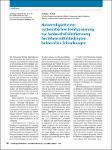Notwendigkeit einer systematischen Feintypisierung zur Ausbruchsfrüherkennung bei lebensmittelbedingten bakteriellen Erkrankungen
Werber, Dirk
Stark, Klaus
Ein wesentliches Ziel der Surveillance lebensmittelbedingter Infektionserkrankungen ist das frühzeitige Erkennen von Krankheitsausbrüchen. In diesem Zusammenhang ist eine systematische flächendeckende Feintypisierungssurveillance ein besonders wertvolles Instrument für ausgewählte bakterielle Erreger, wie z. B. enterohämorrhagische E. coli (EHEC), Listeria monocytogenes, oder bestimmte Salmonellen-Serovare. Mit molekularen Methoden der Feintypisierung werden Erregerisolate von Patienten weitergehend und möglichst auf der klonalen Ebene charakterisiert, um identische Erregerstämme und damit Ausbrüche zu entdecken und Erkrankte einem bestimmten Ausbruchsgeschehen zuzuordnen. In dem hier vorgelegten Plädoyer wird aus Sicht der Infektionsepidemiologie begründet, warum in Deutschland für ausgewählte bakterielle Erreger eine systematische flächendeckende Feintypisierungssurveillance notwendig ist und welche entscheidenden Vorteile sie bietet. Timely outbreak detection is a major objective of the surveillance of food-borne infections. In this regard molecular subtyping is a very useful tool for several bacterial pathogens, e.g. enterohemorrhagic E. coli (EHEC), Listeria monocytogenes and various serotypes of non-typhoidal Salmonella. The basis is the characterization of patient isolates by molecular methods, preferably at the clonal level. The goal is to find groups of identical isolates which may indicate that they share a common origin, i.e. they might belong to an outbreak. In this article we put forward strong reasons why a systematic nationwide molecular subtyping surveillance is needed for selected bacterial pathogens in Germany.
No license information

